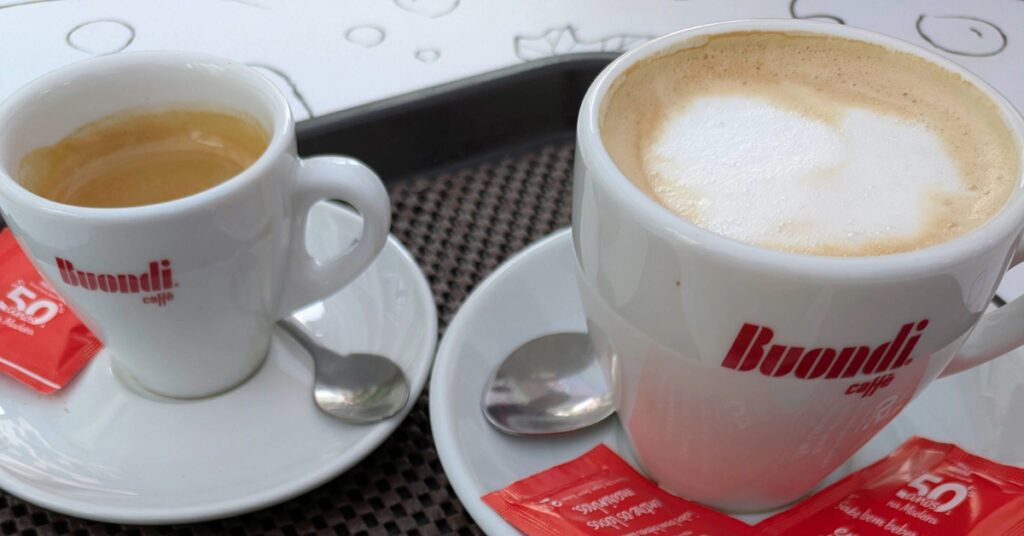When visiting mainland Portugal, uma meia de leite (lit. ‘a half milk’) was my go-to cup of caffeine: half espresso, half milk, served in a larger cup than an espresso. But, upon ordering one here in Madeira, I thought my snuffly head-cold-tainted attempts at Portuguese must’ve just been far too garbled because the only response I got was a blank stare and a head tilt.
But then the penny dropped – ‘Oh, in Madeira we call that uma chinesa!’ (a Chinese lady). [NB: I’ve tried to find out why they’re called this but am currently no wiser.]
Some other common coffees with milk include um garoto (a boy), which is smaller than uma chinesa, served in an espresso cup. Some sources say it got its name because of the fact that it’s a slightly milder espresso, good for introducing children to the drink! Um galão is the equivalent of a latte, served in a glass. Galão means ‘gallon’, referring to the large amount of milk that is added.
As for black coffee, an espresso is usually called uma bica in Madeira. The word bica refers to liquid falling in a trickle. You can usually get away with just saying um café or um expresso (spelt with an ‘x’ in Portuguese but still pronounced like an ‘s’/’sh’). Apparently in Porto, it’s more often called um cimbalino, named after the LaCimbali brand of coffee machines – something to remember when we stop off there on our way to Morocco next month!

You can also order um chino (a Chinese man), which is a watered-down espresso. Again, like uma chinesa, it’s a name unique to Madeira. These are called um abatanado or um americano in the rest of Portugal.
So, while in Madeira we’ve gotten used to ordering ‘uma bica e uma chinesa’. When we get to Porto, it’ll have to be ‘um cimbalino e uma meia de leite’. Or maybe to avoid the confusion we should just drink port!

